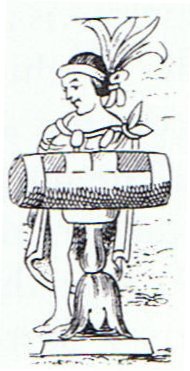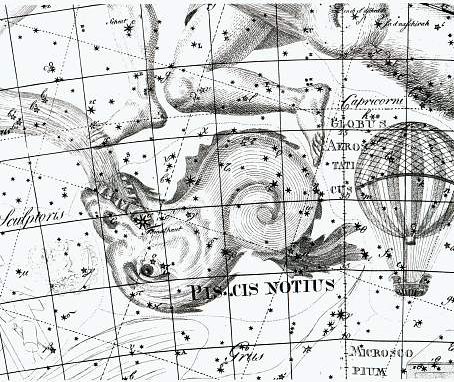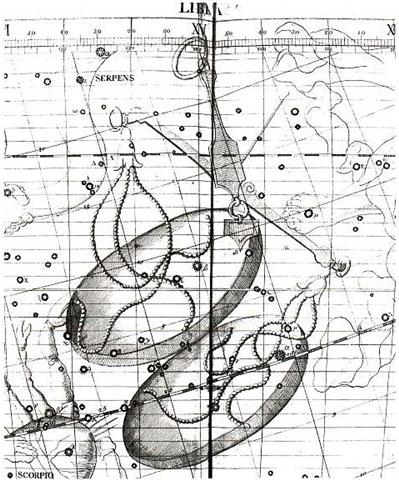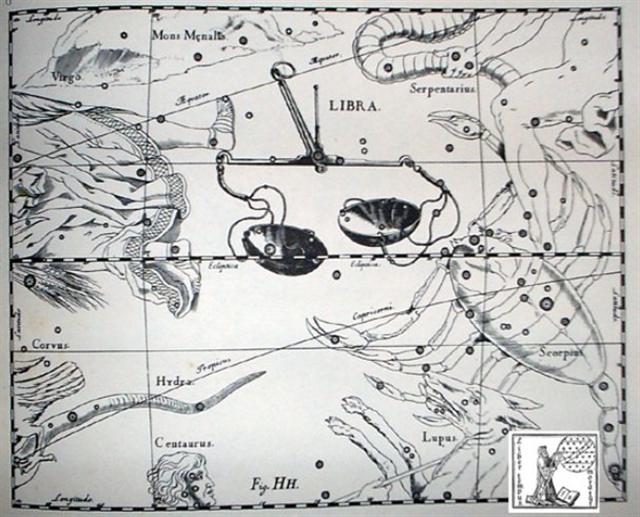From Arcturus at the Full Moon (Cb1-6) to heliacal Bharani
(Cb1-15) there
were only 9 days:
|
FEBR 16 (365 + 47) |
17 (413 = 14 * 29½) |
18 (49) |
 |
 |
 |
|
Cb1-5 |
Cb1-6 (6 + 392) |
Cb1-7 (399) |
|
rutua - te pahu - rutua te maeva |
|
... The [tun]
glyph is nearly the same as that for
the month Pax (T549), except
that the top part of the latter is
split or divided by two curving
lines. Brinton, without referring to
the Pax glyph, identified the
tun glyph as the drum called
in Yucatec pax che (pax
'musical instrument'; che <
*te 'wooden). Yucatec pax
means 'broken, disappeared', and
Quiche paxih means, among
other things, 'split, divide, break,
separate'. It would seem that the
dividing lines on the Pax
glyph may have been used as a
semantic/phonetic determinative
indicating that the drum should be
read pax, not tun (cf.
de Gruyter 1946, p. 27). Thus, one
may expect that this glyph was used
elsewhere meaning 'to break' and
possibly for 'medicine' (Yuc. pax,
Tzel., Tzo. pox) ...

Rutu. 1. To read, to recite,
to pronounce words solemnly;
he-rutu i te kohau motu, to read
the rongorongo tablets; hare rutu
rogorogo mo hakama'a ki te ga poki
ite kai, i te rogorogo,
rongorongo school, house in which
children were taught reading and
writing the rongorongo signs. 2. To
pelt with stones. 3. To gather in
great numbers (of people). Vanaga.
Sound. Rutu-rongorongo = the
sound of recitation. Barthel. T.
Beat. Henry. To recite; tae rutu,
irreverence. Churchill. Pau.:
rutu, a drum. Mgv.: rutu,
to beat, to cause to resound. Ta.:
rutu, a drum, to drum. Mq.:
utu, to drum. Sa.: lutu,
to shake a rattle. Churchill.
Pahu. Drum.
Pahu-rutu-roa =
Long-beating-drum. Barthel. M.
Pahū. Tree gong. Starzecka.
Pahu uma, coffin; in modern
usage, any sort of jar. Pahupahu
= To dig a hole. Vanaga. A trough,
barrel, cask, cradle, drum, chest,
box; pahu nui, a kettle;
pahu oka, a drawer; pahu
papaku, coffin; pahu rikiriki,
sheath; pahu viriviri,
hogshead. Pahupahu, box.
Churchill. A trough, barrel, cask,
cradle, drum, chest, box; pahu
nui, a kettle; pahu oka,
a drawer; pahu papaku,
coffin; pahu rikiriki,
sheath; pahu viriviri,
hogshead; pahupahu, box. P
Mgv., Ta.: pahu, a drum. Mq.:
pahu, a drum, a large
cylindrical container. (To.: bahu,
a hollow tree set in water as a
filter.) Sa.: pusa, a box.
To.: buha, id. Fu.: pusa,
id. Niue: puha, id. Pau.:
puha, id. Pahuahi,
lantern, beacon. Paukumi,
closet, cupboard. Pahupopo, a
mould; pahupopokai, cupboard
for food. Pahure: 1. To sweep
everything away. 2. To wound, to
lacerate, scar, bruise, lesion,
sore; pahurehure, to wound,
to scratch; hakapahure, to
wound. T Pau.: pahure, to be
skinned; pahore, to peel off,
to scale. Mgv.: pahore, to
cut off, to chop, to slice. Ta.:
pahore, to flay, to skin.
Churchill 2.
Maeva.
T. 1. Move. Rangi-maeva =
Moving Sky (name of a marae).
2. Greet, greeting. Henry. |
|
DELTOTUM (Δ)
= β Trianguli
(31.2), ι Trianguli (31.7), η
Arietis (31.9) |
ξ¹ Ceti (32.1) |
γ,
δ
Trianguli (33.0),
χ
Persei (33.2),
10 Trianguli
(33.5),
θ
Arietis (33.3),
MIRA (Astonishing) =
ο
Ceti
(33.7) |
|
April 21 (111) |
22 (*32) |
23 (478 = 414 + 64) |
|
Julian equinox |
'March 26 (85 = 450 - 365) |
27 (*53 weeks) |
|
"March 11 (*355) |
12 (436 = 365 + 71) |
13 (*51 weeks) |
|
CLOSE TO THE FULL MOON: |
|
AUG (4 + 14) |
19 (231 = 48 + 183) |
20 |
|
... It was 4
August 1968, and it was the feast
day of Saint Dominic, patron of
Santo Domingo Pueblo, southwest of
Santa Fe. At one end of the hot,
dusty plaza, a Dominican priest
watched nervously as several hundred
dancers arranged in two long rows
pounded the earth with their
moccasined feet as a mighty,
collective prayer for rain,
accompanied by the powerful baritone
singing of a chorus and the beat of
drums. As my family and I viewed
this, the largest and in some ways
the most impressive Native American
public ceremony, a tiny cloud over
the Jémez Mountains to the northwest
got larger and larger, eventually
filling up the sky; at last the
storm broke, and the sky was
crisscrossed by lightning and the
pueblo resounded with peals of
rolling thunder ... |
|
Neck-2 (Dragon)
ASELLUS TERTIUS (3rd Ass Colt) =
κ
Bootis,
κ
Virginis,
14 Bootis
(214.8) |
Al Ghafr-13 (The Cover) /
Svāti-15 (Very Good) /
TAHUA-TAATA-METUA-TE-TUPU-MAVAE-6 (a
pillar to stand by)
15 Bootis
(215.2),
ARCTURUS =
α
Bootis (215.4),
ASELLUS SECUNDUS (2nd Ass Colt) =
ι
Bootis
(215.5),
SYRMA (Train of the Virgin's Robe) =
ι
Virginis,
λ
Bootis (215.6),
η
Apodis (215.8)
*174.0 = *215.4 - *41.4 |
ι Lupi,
18 Bootis
(216.3),
KHAMBALIA (Crooked-Clawed) = λ
Virginis (216.4),
υ Virginis (216.5), ψ Centauri
(216.6), ε Apodis (216.8)
*175.0 = *216.4 - *41.4 |
|
21 |
Oct 22 (295) |
23 |
|
24 |
'Sept 25 (*188) |
26 |
|
10 |
"Sept 11 (254) |
12 |
|
FEBR 19
(50) |
20 (365 +
51 = 416) |
21 |
22 (19 *
22 = 418) |
 |
 |
 |
 |
|
Cb1-8
(400) |
Cb1-9 |
Cb1-10 |
Cb1-11 |
| atua
rerorero |
atua hiko
ura |
hiko o tea |
ka higa te
ao ko te henua ra ma te hoi atua |
|
Hiko. 1. To ask (for
something). 2. To filch, to pilfer.
Hikohiko, to snatch by force; robbery by
assault. Vanaga. Hikohiko keke,
hide-and-seek. Churchill. Pau.: 1. To glean.
Mgv.: kohi, to gather, to collect.
Ta.: ohi, to glean. Mq.: kohi,
id. Ma.: kohi, to gather. 2. Bamboo.
Mgv.: kohe, id. Ta.: ohe, id.
Mq.: kohe, id. Sa.: 'ofe, id.
Ma.: kohe, a plant name. 3. Diarrhea.
Ta.: ohi, dysentery. Churchill. Mgv.:
kohiko, a small bag mounted in the
fruit-picking fork. Mq.: kohiko, a
small net. Churchill. |
|
no star listed (34) |
ξ Arietis (35.0),
ρ Ceti (35.4),
12 Trianguli
(35.8), ξ² Ceti (35.9)
*360.0 = *35.4 - *41.4 |
σ Ceti (36.9) |
ν Ceti (37.9) |
|
April 24 |
25 (480) |
26 |
27 |
|
'March 28 |
29 (88
= 115 - 27) |
30 |
31 (455 =
365 + 90) |
|
"March 14
(73) |
15
(*360) |
16 |
17 |
|
CLOSE TO THE FULL MOON: |
|
AUG 21 |
22 |
23 |
24 (236 =
8 * 296½) |
|
ASELLUS PRIMUS (1st Ass Colt) =
θ
Bootis
(217.8) |
τ
Lupi,
δ
Oct. (218.1),
φ
Virginis (218.7)
FOMALHAUT (α Piscis Austrini) |
σ
Lupi (219.1),
ρ
Bootis (219.5),
HARIS (Keeper) =
γ
Bootis
(219.7) |
σ Bootis (220.2),
η Centauri (220.4)
*179.0 = *220.4 - *41.4 |
 |
|
Oct 24 |
25 |
26 |
27
(*220) |
|
'Sept
27 (270) |
28 |
29 |
30
(*193) |
|
"Sept
13 (256) |
14 |
15 |
16
(*179) |
|
TERMINALIA |
BISSEXTUM |
FEBR 25 |
26 (365 + 57 = 422) |
|
... The
leap day was introduced as part of the
Julian reform. The day following the
Terminalia (February 23) was doubled,
forming the 'bis sextum -
literally 'double sixth', since February
24 was 'the sixth day before the Kalends
of March' using Roman inclusive counting
(March 1 was the 'first day') ... |
 |
 |
 |
 |
|
Cb1-12 (404) |
Cb1-13 |
Cb1-14 |
Cb1-15 |
| manu
rere - kua rere ga manu - ki te ragi |
eaha
te nuku erua |
koia
kua huki |
e niu
tu |
|
Nuku.
1. Pau.: nuka, crowd,
throng. Ta.: nuú, army, fleet.
Mg.: nuku, a host, army. 2. Mgv.:
nuku, land, country, place. Sa.:
nu'u, district, territory,
island. Churchill.
Niu.
Palm tree, coconut tree; hua niu,
coconut. Vanaga. Coconut, palm,
spinning top. P Pau., Ta.:
niu,
coconut. Mgv.:
niu,
a top;
niu mea, coconut. Mq.:
niu,
coconut, a top. Churchill. The fruit of
miro.
Buck. T. 1. Coconut palm. 2. Sign for
peace. Henry. The sense of top lies in
the fact that the bud end of a coconut
shell is used for spinning, both in the
sport of children and as a means of
applying to island life the practical
side of the doctrine of chances. Thus it
may be that in New Zealand, in latitudes
higher than are grateful to the coconut,
the divination sense has persisted even
to different implements whereby the
arbitrament of fate may be declared.
Churchill 2. |
|
ν Arietis (38.5), δ, ε Ceti (38.8)) |
μ
Arietis (39.4),
HEAD OF THE FLY = 35 Arietis
(39.6),
KAFFALJIDHMA (Part of a Hand)
=
γ
Ceti,
θ
Persei (39.8)
*363.0
= *39.4 - *41.4 |
π
Ceti,
ο
Arietis (40.0),
ANGETENAR (Bend in the River)
=
τ¹
Eridani,
μ
Ceti (40.2),
RIGHT WING = 39 Arietis
(40.9) |
Bharani-2 (Yoni) /
Stomach-17 (Pheasant)
π
Arietis (41.2),
MIRAM (Next to the Pleiades)
=
η
Persei
(41.3),
BHARANI = 41 Arietis (41.4),
τ²
Eridani,
σ
Arietis (41.7) |
|
April 28 (4 * 29½) |
29 (*39) |
30 |
May 1
(11 * 11) |
|
'April 1 (13 * 7) |
2 |
3 |
4 (*14) |
|
"March 18 |
19 (*364 / *363) |
20
(*364) |
21 (0h) |
|
CLOSE TO THE FULL MOON: |
|
AUG 25 |
26 |
27 |
28
(240) |
|
ρ Lupi (221.0),
TOLIMAN
= α Centauri
(221.2), π Bootis (221.8), ζ Bootis
(221.9) |
31 Bootis
(222.0),
YANG MUN (South Gate)
=
α
Lupi
(222.1),
RIJL AL AWWA (Foot of the Barker)
=
μ
Virginis
(222.5),
ο
Bootis (222.9) |
IZAR (Girdle)
=
ε
Bootis
(223.0),
109 Virginis,
α
Apodis (223.3),
μ
Librae (223.8) |
Al Zubānā-14a (Claws) /
Visakha-16 (Forked) /
Root-3 (Badger)
ZUBEN ELGENUBI (Southern Claw)
=
α
Librae
(224.2),
ξ
Bootis,
ο
Lupi (224.5) |
 |
|
Oct 28 (301) |
29
(*222) |
30 |
31 |
|
'Oct 1 |
2
(*195) |
3 |
4 (277) |
|
"Sept 17 (260) |
18 (*181) |
19 |
20 |
The idea of a pair of days (bissextum,
nuku erua) at the same place is evidently
visualized in Cb1-13.
In order to keep the balance straight it was
necessary to somewhere correct for the difference
between number of calendar days (365) and the
length of the synodic year (ca 365¼).
It was necessary to put the balance in order at Bharani / Zuben Elgenubi.

This idea will put light on the otherwise
mysterious difference between the pair of
illustrations by Hevelius below. A cycle will always
measure 2π and these half-circles must be in
balance. Spring equinox north of the equator
should be balanced against the spring equinox south
of the equator.


|















